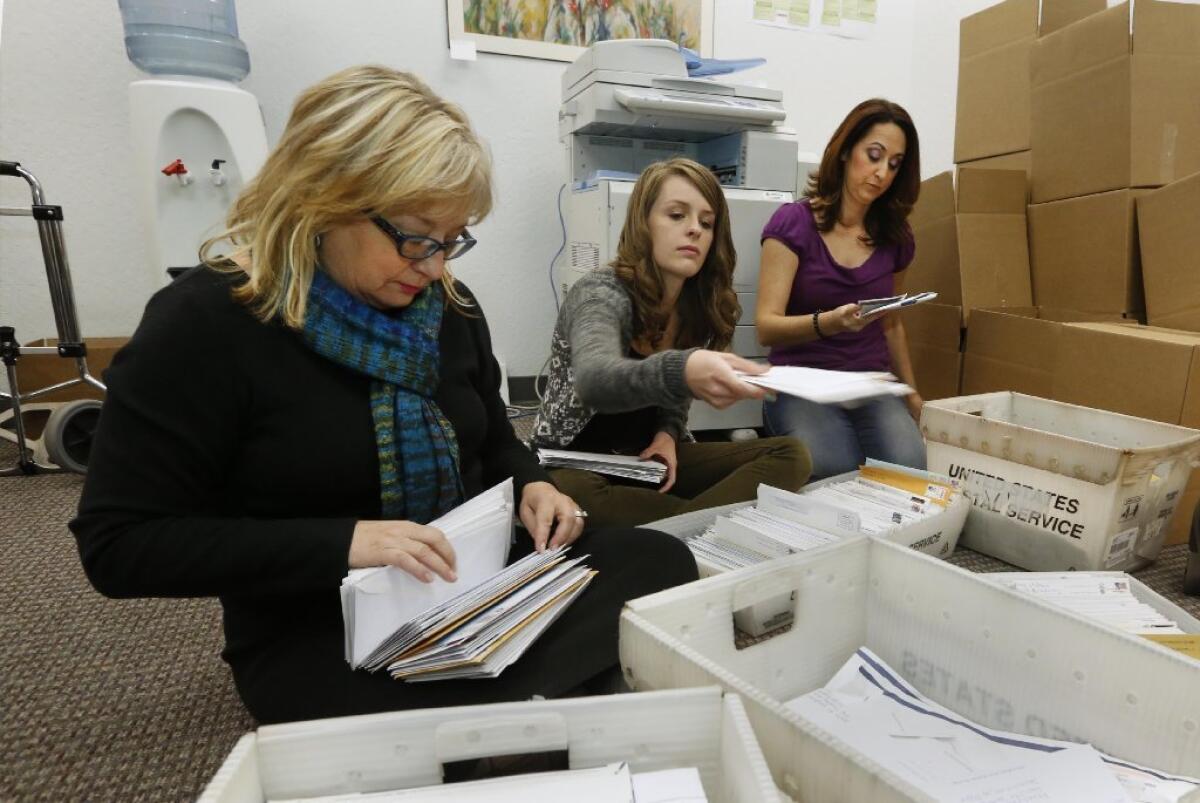A Prop. 8-style attack on transgender student rights

Here’s something that California doesn’t need: a replay of Proposition 8 in slightly different form. But it may get one. Opponents of a new state law that expands the rights of transgender students say they have submitted enough signatures to place a measure on the ballot to repeal it. Recent spot counts by the secretary of state show they may not have reached the threshold. In our view, California would be better off if the petitions were found to be lacking.
As with Proposition 8, which altered the California constitution to ban same-sex marriages, this proposal is based on fear of and intolerance toward people whose sexuality falls outside of traditionally accepted norms. Once again, voters will be told that a ballot measure will protect children and families and sexual normalcy. But protect them from whom? The supposed threat in this case comes from some of the state’s most vulnerable individuals — youngsters who were born “male” or “female” but who feel that those descriptions are wrong or incomplete.
The new law, which takes effect Jan. 1, would allow transgender students to use the school bathrooms and locker rooms and to participate on athletic teams that correspond to the gender with which they identify. Just as the American public understood little about homosexuality in years past, most people know little about transgender identity today. It’s understandable, perhaps, that some react with raised eyebrows at the thought of a fourth-grader with male genitalia using the girls’ bathroom, or a teenager with female physical sexual characteristics playing on the boys’ volleyball team and using the boys’ locker room. It’s not at all surprising that some parents wonder — and worry — about their children seeing the naked bodies of students of a different gender.
The issue isn’t simple. But extending the rights of transgender students is neither as groundbreaking nor as certain to cause trouble as opponents claim.
To start with, the California Interscholastic Federation, the body that governs high school sports, got there ahead of state law. It adopted a bylaw change in February that allows student athletes to compete on the teams of the gender with which they identify; it is working out detailed rules to keep the policy from being gamed.
What’s more, the Los Angeles Unified School District has operated for the last two years under rules practically identical to those in the new law. A couple of hundred students — of the district’s total enrollment of more than 600,000 — have made their transgender identity known to their schools, and L.A. Unified officials say the full-access policy has gone smoothly so far, without students or parents registering complaints or accusations.
Opponents of the law will try to convince voters otherwise. Expect arguments like these: Boys will get into college by faking their way onto the girls’ teams and unfairly using their added height and musculature to become athletic stars. Worse, they’ll flash the girls in the locker room. And think of the trouble that would arise if a teenager who is physically female showers with a bunch of 6-foot-tall guys.
This is modern myth-making, similar to the old canard that gay men don’t form stable, long-lasting relationships. But public understanding of homosexuality has grown; 17 states recognize same-sex marriage, and several more are on the verge of doing so. And now voters in California are being asked to acknowledge that just as gay marriage does not in any way harm traditional heterosexual marriage, transgender children and teenagers represent no threat to schools or to other students.
Quite the contrary. It is extremely difficult for many transgender youngsters to admit to themselves that they’re uncomfortable with their physical gender, much less admit it to fellow students.
That’s not to say conflicts won’t occur. Some students will feel uncomfortable if someone of the opposite physical gender is changing in the same locker room, and schools should look for ways to reduce tensions and give students the option of changing elsewhere if they’re bothered. What schools shouldn’t do is use that discomfort as an excuse to deny the rights of transgender students.
More to Read
Sign up for Essential California
The most important California stories and recommendations in your inbox every morning.
You may occasionally receive promotional content from the Los Angeles Times.










